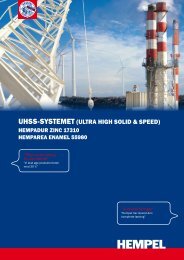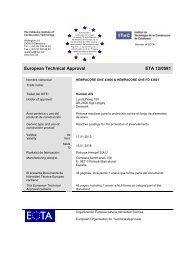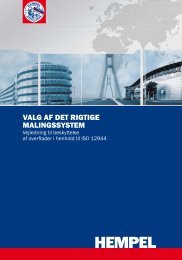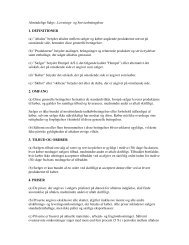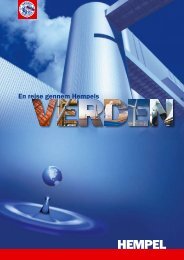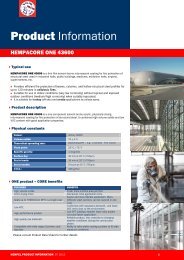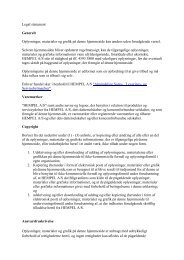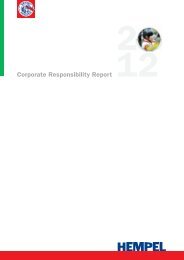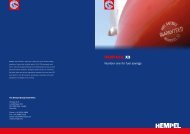Hempel Corporate Responsibility Report 2011
Hempel Corporate Responsibility Report 2011
Hempel Corporate Responsibility Report 2011
Create successful ePaper yourself
Turn your PDF publications into a flip-book with our unique Google optimized e-Paper software.
Ethical Behaviour | Our People | Community Engagement | Procurement | Health & Safety | Environment<br />
Total energy in kWh per tonne product manufactured<br />
Total waste kg per tonne paint produced<br />
hazardous waste other waste<br />
187<br />
183<br />
26.3<br />
161<br />
160<br />
145<br />
127<br />
131<br />
143<br />
139<br />
148<br />
22.2<br />
20.0<br />
17.2<br />
17.5<br />
17.0<br />
17.2<br />
16.4<br />
8.4<br />
8.1<br />
17.3<br />
17.0<br />
16.4<br />
16.6<br />
15.7<br />
13.7<br />
13.7<br />
15.7<br />
14.1<br />
16.7<br />
2002<br />
2003<br />
2004<br />
2005<br />
2006<br />
2007<br />
2008<br />
2009<br />
2010<br />
<strong>2011</strong><br />
2002<br />
2003<br />
2004<br />
2005<br />
2006<br />
2007<br />
2008<br />
2009<br />
2010<br />
<strong>2011</strong><br />
Energy consumption<br />
Thanks to energy saving efforts and a rise in production volume, our energy<br />
consumption per tonne of manufactured product decreased from 2002 to 2007.<br />
From 2008, our energy consumption has remained stable, but due to a decrease<br />
in total production volume, relative energy consumption has increased.<br />
In <strong>2011</strong>, the opening of two modern, automated factories in Poznan, Poland and<br />
Guangzhou, China began to impact our energy consumption. Automation helps us<br />
reduce the risk of injuries that stem from manual handling, but it does lead to greater<br />
energy use. We are working to counteract these factors through energy saving<br />
initiatives such as optimising equipment usage in our production plants.<br />
Waste management<br />
Waste is an element of paint production that is impossible to avoid, but must<br />
be managed. Our intention is to reduce waste generation as much as possible and<br />
to increase the recycling of waste. Since 2002, <strong>Hempel</strong>’s waste generation is down<br />
by almost 50 per cent.<br />
We have made considerable reductions in “other waste,” which consists of materials<br />
that can for the most part be recycled (including packaging, metal, plastic and wood).<br />
“Hazardous waste” needs special disposal treatment, and each year more and more<br />
waste fractions are included in this category as a result of updated legislation.<br />
We have nonetheless kept pace with the industry in terms of our hazardous<br />
waste reduction efforts.<br />
In 2010, we changed our definition of waste to exclude waste that can be repurposed,<br />
which resulted in the large drop from 2009 to 2010. Waste management will continue<br />
to be a focus area for all of our factories in 2012.<br />
17




